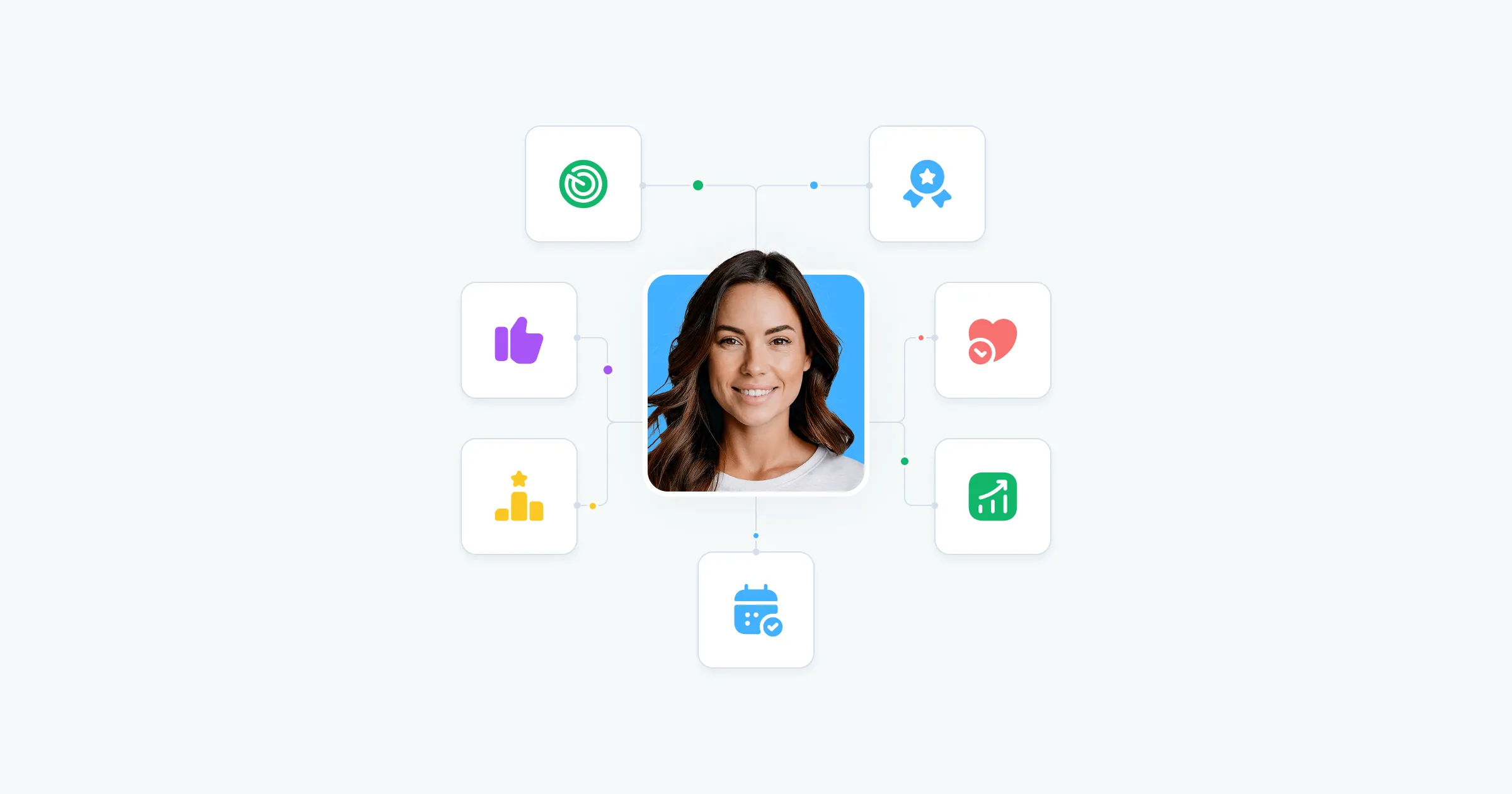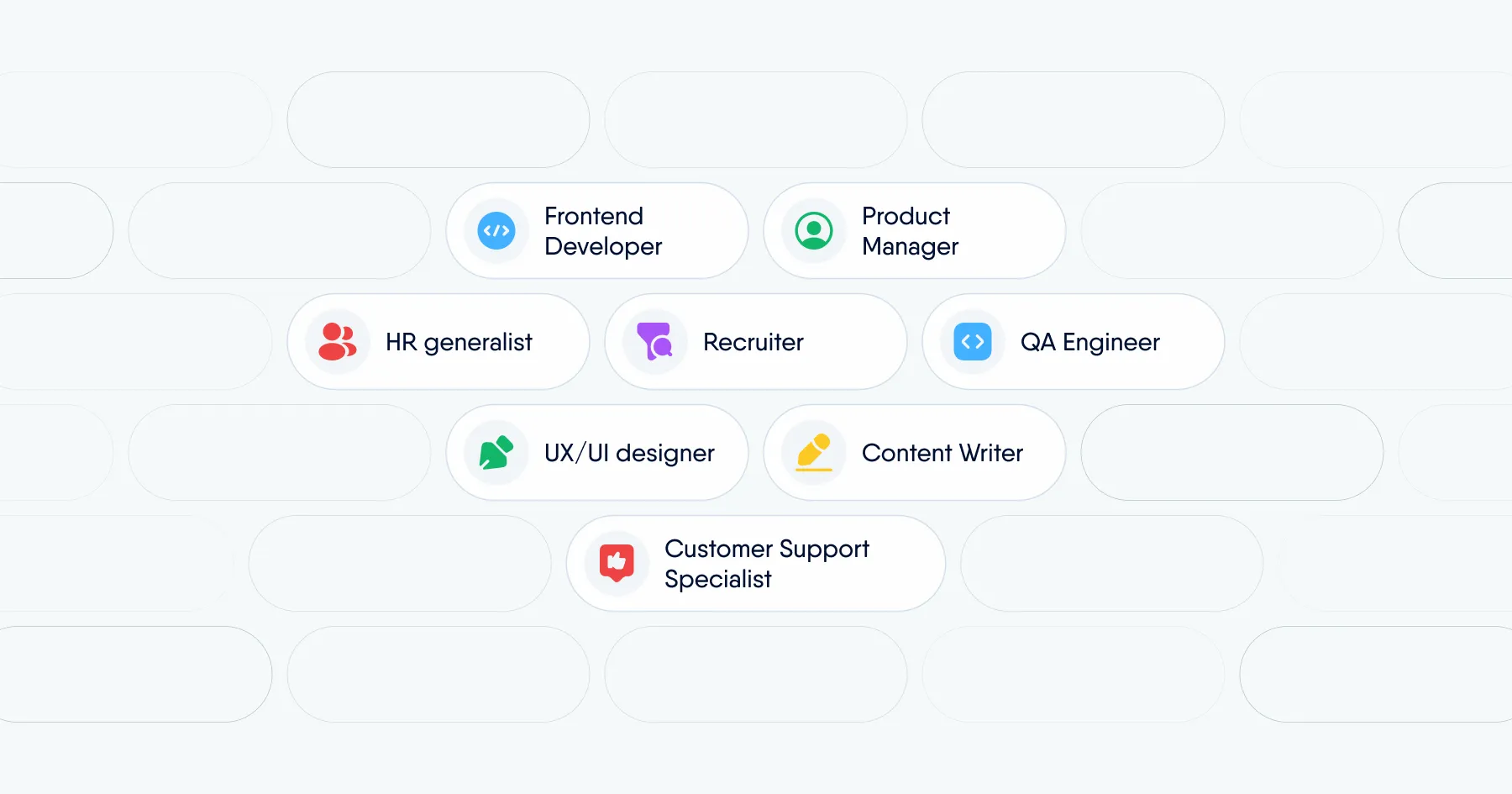Reverse mentoring
What is reverse mentoring?
What is reverse mentoring?
Reverse mentoring is a development model where younger or less experienced employees become mentors to their more senior colleagues.
The core mentoring relationship remains the same – the mentee learns and pursues developmental goals while the mentor shares knowledge. The difference lies in who takes the lead: younger employees share their expertise in areas where they excel, such as new technologies, digital tools, online communication, or current social trends.
This approach is gaining traction in organizations looking to strengthen cross-generational collaboration and promote a culture built on diversity and mutual learning. Companies like PwC and Deloitte have already successfully implemented reverse mentoring programs.
Goals of reverse mentoring
Reverse mentoring naturally combines operational and strategic organizational objectives. HR teams implement it to:
- Foster two-way knowledge and experience exchange between employees;
- Build team relationships based on mutual respect and openness;
- Facilitate networking and cross-departmental collaboration;
- Better understand generational differences and learn how to bridge them;
- Strengthen diversity, equity, and inclusion (DEI) culture;
- Enhance digital skills among senior employees;
- Develop leadership and communication skills in younger workers;
- Increase engagement and sense of impact among younger talent.
What are the benefits of reverse mentoring?
Reverse mentoring creates value for mentors, mentees, and the entire organization:
Enhanced digital skills across teams. Reverse mentoring helps level the digital playing field without the need for large-scale training initiatives. It allows employees to learn at their own pace, with content tailored to their specific needs.
Leadership development for younger employees. The mentor role enables younger workers to develop skills in communication, feedback delivery, boundary setting, and supporting others' growth. This hands-on approach to learning responsibility prepares them for future leadership roles.
Promoting inclusivity and diversity. Reverse mentoring supports DEI initiatives by building relationships that transcend age, tenure, or position. It demonstrates that knowledge flows in all directions, making diversity a practical part of daily collaboration rather than just a strategic buzzword.
Reducing generational bias. Direct collaboration between different generations helps break down stereotypes and build mutual understanding. This works more effectively than awareness workshops because it's based on real experience and shared goals.
Improved retention of younger employees. Taking on a mentor role strengthens feelings of influence, agency, and belonging. Younger employees who see their skills valued are less likely to leave the organization in their early years.
Stronger organizational collaboration. Mentoring pairs often connect people from different departments or organizational levels. This structure improves information flow, especially in companies with complex structures or hybrid work models.
Increased employee engagement. Participating in mentoring programs boosts motivation and sense of purpose at work. It proves that the organization approaches development flexibly and modernly, valuing competencies regardless of position.
Challenges in implementing reverse mentoring programs
While reverse mentoring aligns well with modern organizational needs in theory, practical implementation can be demanding. Common challenges include:
Team resistance. More experienced professionals may feel uncomfortable in the learner role, while younger employees might worry about not being taken seriously.
Limited program reach. This collaboration model isn't feasible organization-wide, particularly in frontline teams or roles requiring highly specialized knowledge. This can create feelings of exclusion.
Time and commitment constraints. Both traditional and reverse mentoring require regular meetings and a willingness to openly exchange experiences. Without dedicated time and space, programs lose their effectiveness.
Poor participant matching. Reverse mentoring success largely depends on careful program preparation. Mentors and mentees should be matched based on competencies, work styles, and relationship expectations. Both parties also need ongoing support from HR and leadership.
How to implement reverse mentoring in your organization
When planning reverse mentoring implementation, follow this proven framework:
- Define program parameters. Establish strategic program goals and align them with organizational priorities. Determine program duration, delivery format (in-person, remote, or hybrid), and success metrics.
- Select and match participants. Identify mentor and mentee candidates based on their competencies, experience, and openness to program participation. Pair matching should consider work styles, motivation, and potential for building valuable relationships.
- Prepare participants. Provide mentors with support in relationship building, conducting developmental conversations, and providing feedback. Mentees should understand how to set goals, articulate their needs, and actively engage in the mentoring relationship.
- Establish collaboration guidelines. Clearly define mentoring relationship boundaries: topic scope, confidentiality rules, mutual expectations, and meeting structure. Consider formalizing these in a mentoring agreement to maintain transparency.
- Provide support and evaluation. HR should regularly monitor program progress, remain available for questions, and provide participants with necessary materials. Systematically collect both qualitative and quantitative feedback to assess program impact and improve future iterations.
How an HR platform can support reverse mentoring implementation
Leverage HR platform functionality, such as PeopleForce, to efficiently manage your reverse mentoring program:
- Match program participants based on competencies, interests, and expectations visible in employee profiles;
- Schedule mentoring meetings between participants with automatic reminders using the company calendar;
- Share supporting mentoring materials (templates, instructions, best practices) through a centralized knowledge base;
- Facilitate employee communication through messenger integrations;
- Collect participant feedback via surveys;
- Analyze program effectiveness through advanced HR analytics.
A reverse mentoring program built on thoughtful structure and supported by HR tools promotes better cross-generational collaboration and strengthens organizational learning culture.

